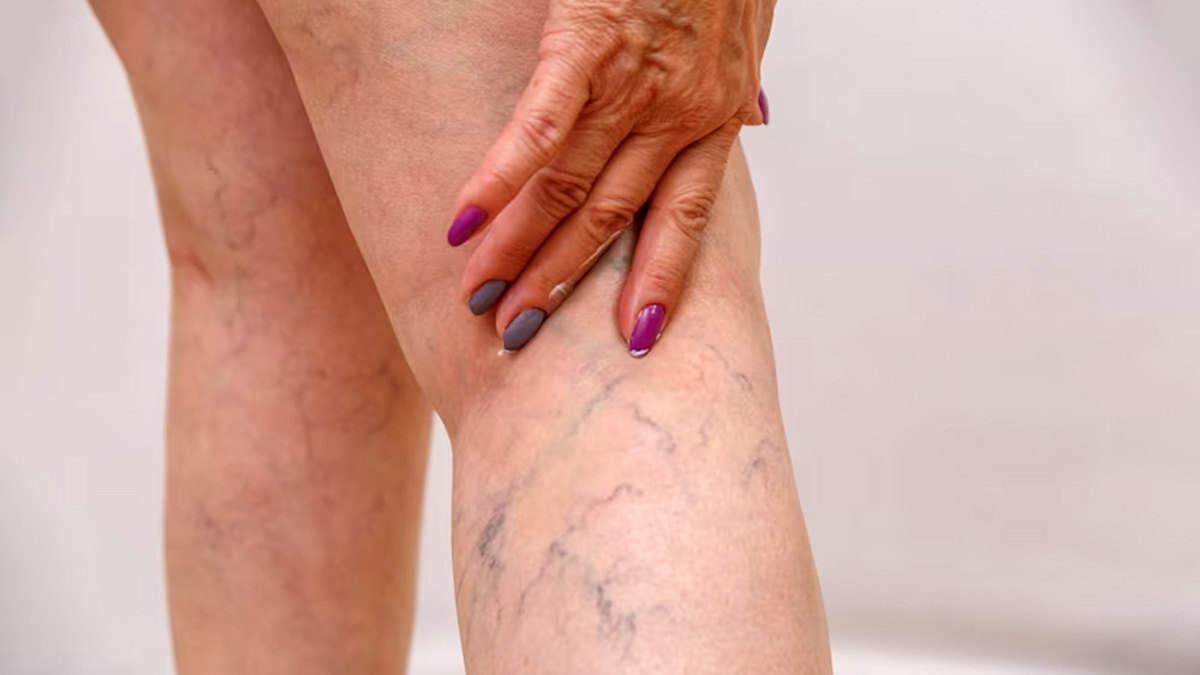
It can be alarming to experience sudden pain and discomfort in the body; more so because pain in certain areas can mean several different things. For instance, leg pain could mean anything from a basic muscle pull to something more concerning like a Deep Vein Thrombosis (DVT), a common vascular disease that occurs when blood clots form in the deeper veins of the body. Speaking with the OnlyMyHealth editorial team, Dr Krishna Chaitanya, Consultant - Vascular and Endovascular Surgery, Aster RV Hospital, discusses what DVT is, its causes and when one should seek medical assistance.
Table of Content:-
Also Read: Signs In Your Legs You Shouldn't Ignore: High cholesterol and Peripheral Artery Disease
What Is Deep Vein Thrombosis (DVT)?
 As the name suggests, Deep Vein Thrombosis (DVT) occurs when blood clots start to form in the veins deeply located in the body. This commonly includes the lower limbs, such as leg, thigh or pelvis. The most concerning aspect of the condition is that the blood clots can partially or completely block the blood circulation through the veins, causing multiple complications. While Deep Vein Thrombosis is not life-threatening, it can be a common cause of other health problems, such as Pulmonary Embolism (PE).
As the name suggests, Deep Vein Thrombosis (DVT) occurs when blood clots start to form in the veins deeply located in the body. This commonly includes the lower limbs, such as leg, thigh or pelvis. The most concerning aspect of the condition is that the blood clots can partially or completely block the blood circulation through the veins, causing multiple complications. While Deep Vein Thrombosis is not life-threatening, it can be a common cause of other health problems, such as Pulmonary Embolism (PE).
Dr Krishna Chaitanya says, “Lack of awareness and timely intervention can be dangerous and even lead to substantially decreased quality of life in the long run.”
Understanding The Cause Of DVT
Dr Chaitanya says, “Deep Vein Thrombosis can be caused by many factors.” These include:
- Hereditary factors, such as clotting abnormalities, which can run in the families
- Other risk factors include smoking, obesity, cancer, major surgeries especially those on the pelvis, hip and knee
- Prolonged periods of immobility like long distance flight travel
- Paralysis or prolonged illnesses
- Certain medications like hormonal pills
Symptoms To Watch Out For
Common symptoms include:
- Swelling of the affected limb accompanied by pain
- Redness and warmth in the affected area
“Urgent medical attention is often required if the above symptoms are associated with cough, chest pain or breathing difficulties as it may indicate that the clots might have migrated to the lungs,” says Dr Chaitanya.
In addition, any unilateral (single) limb swelling - unless otherwise proven - should be evaluated to rule out DVT. If it is diagnosed, such individuals should be immediately started on blood thinners.
Also Read: Everything You Need To Know About Getting A Stent, Cardiologist Weighs In
Treatment Options

When it comes to treating Deep Vein Thrombosis, the primary goal is to keep the clot from getting bigger and engaging with other veins. In addition, one should prevent the clot from bursting in the vein and moving into the lungs. Depending on the severity of the condition, your healthcare provider may suggest treatments. These include:
Anticoagulants, also called blood thinners
Blood thinners not only prevent blood clotting, but also prevent clots from getting bigger.
Compression stockings
Elastic compression stockings help in getting rid of leg swelling. These are mostly worn below the knee and are tight at the ankle but loosen up as they move away from it.
Filters
In case a person cannot take medications to thin the blood, doctors may place a filter in the large vein, also known as the vena cava, which is in your belly. This procedure stops the broken clots from settling in the lungs.
Bottomline
Deep Vein Thrombosis (DVT) may not have fatal consequences, however, if they are left untreated, they can lead to many complications. Consulting a doctor, proper intake of medications, as directed by the healthcare professional, and making healthier lifestyle choices can help manage the symptoms of DVT. In addition, exercise your legs and remember to wear compression stockings.
Also watch this video
How we keep this article up to date:
We work with experts and keep a close eye on the latest in health and wellness. Whenever there is a new research or helpful information, we update our articles with accurate and useful advice.
Current Version